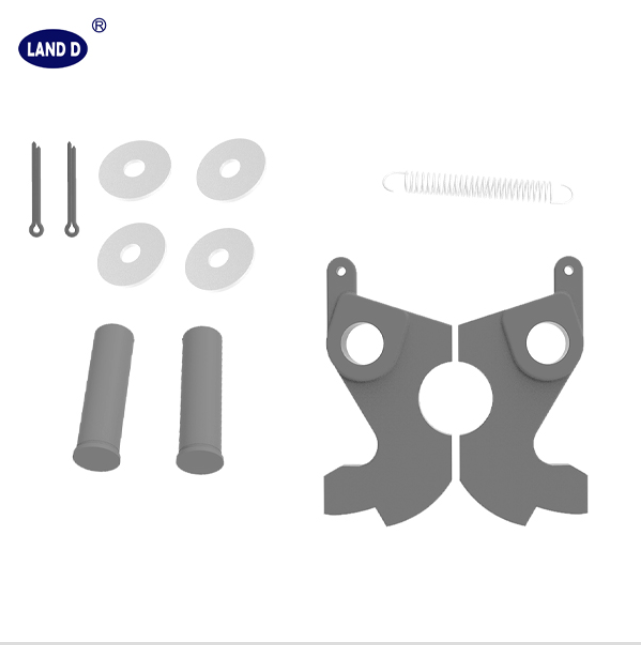Дек . 25, 2024 22:12 Back to list
Optimal Positioning for OEM Fifth Wheel Hitch Installation and Setup Guidelines
Understanding OEM Fifth Wheel Hitch Placement
When it comes to towing heavy trailers, fifth wheel hitches provide some of the most stable and reliable options available. The placement of an OEM (Original Equipment Manufacturer) fifth wheel hitch is crucial to the effective towing of fifth wheel trailers. To maximize safety, ensure efficient weight distribution, and improve driving performance, it is important to understand the considerations surrounding the placement of these hitches.
What is a Fifth Wheel Hitch?
Fifth wheel hitches are specialized towing components that are mounted in the truck bed rather than on the bumper. They consist of a plate and a pivoting jaw that locks into a kingpin on the trailer. This design allows for better weight distribution over the truck’s axles, which is vital for towing large and heavy loads. An OEM fifth wheel hitch is specifically designed for a particular make and model of truck, ensuring it meets manufacturer safety and performance standards.
Importance of Hitch Placement
The placement of a fifth wheel hitch is one of the most critical factors affecting towing dynamics. An improperly installed hitch can lead to several issues, including
1. Poor Weight Distribution Effective weight distribution is critical for vehicle stability while towing. If the hitch is placed too far forward or too far back, it can alter the weight distribution on the tow vehicle's axles, resulting in swaying, difficulty in steering, and increased stopping distances.
2. Increased Wear and Tear An incorrectly positioned hitch can cause excessive strain on both the trailer and the tow vehicle. This can lead to premature wear of components, increased maintenance costs, and safety hazards.
3. Driving Safety The placement of the hitch also influences how the tow vehicle handles while turning. A misaligned hitch can lead to unpredictable trailer movements, increased chances of jackknifing, and difficulties in maneuvering through tight spaces.
oem fifth wheel hitch placement

Recommended Placement Guidelines
To achieve optimal performance and safety when installing an OEM fifth wheel hitch, consider the following guidelines
1. Refer to the Manufacturer’s Instructions Each truck model has specific recommendations for the placement of the fifth wheel hitch. Consult the owner’s manual or manufacturer guidelines to find the ideal mounting points in the truck bed.
2. Positioning Over the Axles The hitch should typically be placed directly over or slightly in front of the rear axle for optimal weight distribution. This positioning helps to ensure that the weight of the trailer is transferred effectively to the front of the vehicle, aiding stability.
3. Height Adjustment Ensure that the hitch is set at the right height. The kingpin should be level with the fifth wheel plate when the truck is loaded. This prevents too much upward or downward displacement during towing.
4. Consider Payload Capacity Check the truck's load ratings to ensure it can handle the weight of both the fifth wheel hitch and the trailer. Overloading can lead to severe handling and braking issues.
Final Thoughts
Understanding the nuances of OEM fifth wheel hitch placement is vital for anyone looking to tow trailers safely. By adhering to manufacturer guidelines and employing best practices for hitch installation, you not only enhance your towing experience but also ensure that you, your vehicle, and other road users remain safe. Proper placement not only improves handling and driving comfort but can also minimize wear on your vehicle, contributing to long-term performance and reliability.
In conclusion, investing time in correctly placing your fifth wheel hitch and following safety protocols will yield significant benefits, allowing you to enjoy the journey while towing your trailer efficiently and safely. Whether you are hauling travel trailers, campers, or larger equipment, proper hitch placement is a foundational element that should not be overlooked.
-
Fontaine Company Durable Fifth Wheels & Precision Watch Solutions
NewsJun.01,2025
-
Premium Jost Fifth Wheel Pin Removal – Durable & Easy Installation
NewsJun.01,2025
-
High Quality Truck Parts & Services FleetPride Sacramento
NewsJun.01,2025
-
High-Quality 5th Wheels Best Deals & Durable Designs [Brand]
NewsMay.31,2025
-
Premium Stoops Trailer Parts High-Quality & Discount Deals
NewsMay.31,2025
-
Transpower Trucking Meridian MS Reliable & Affordable Freight Solutions
NewsMay.31,2025
